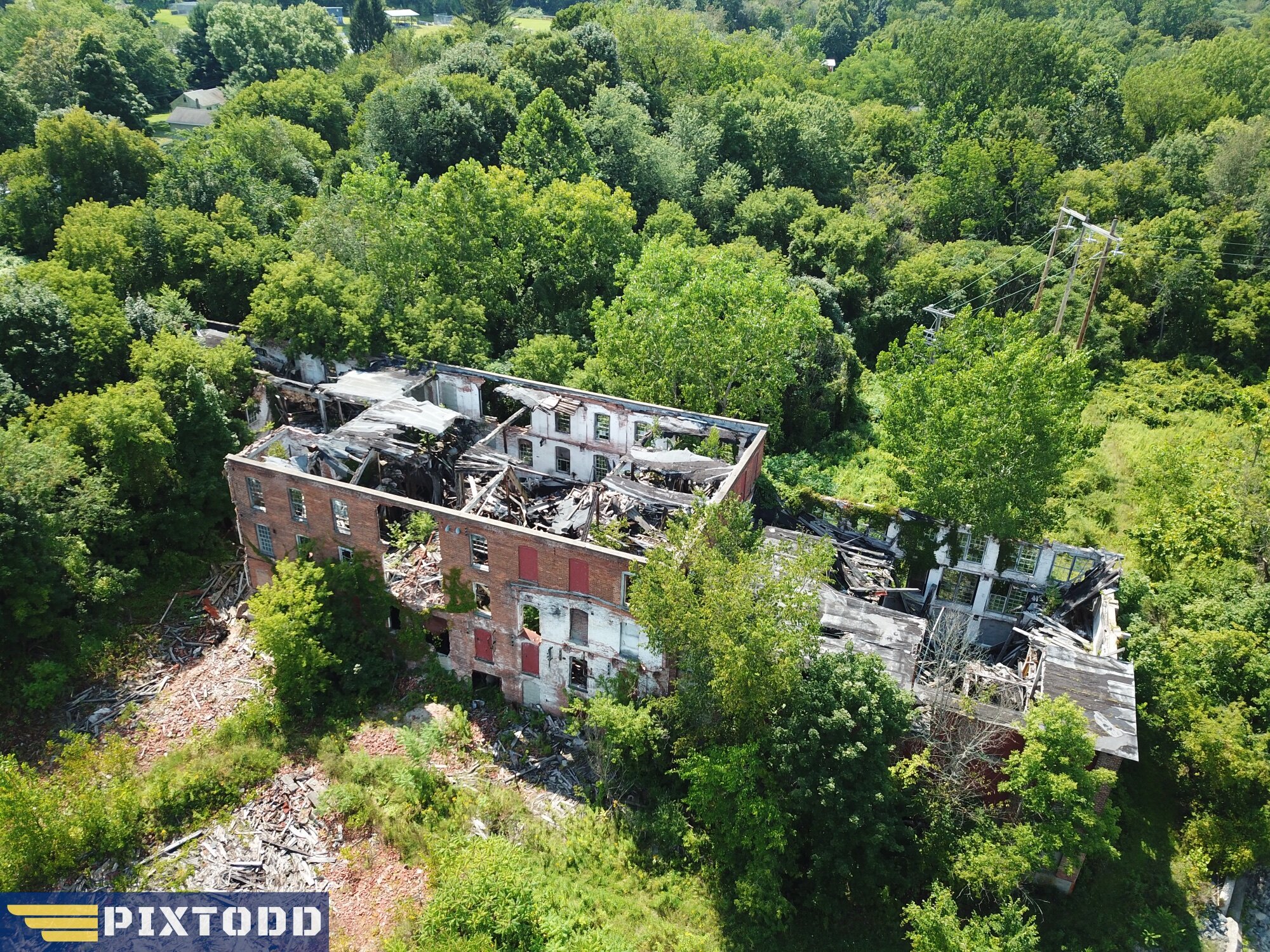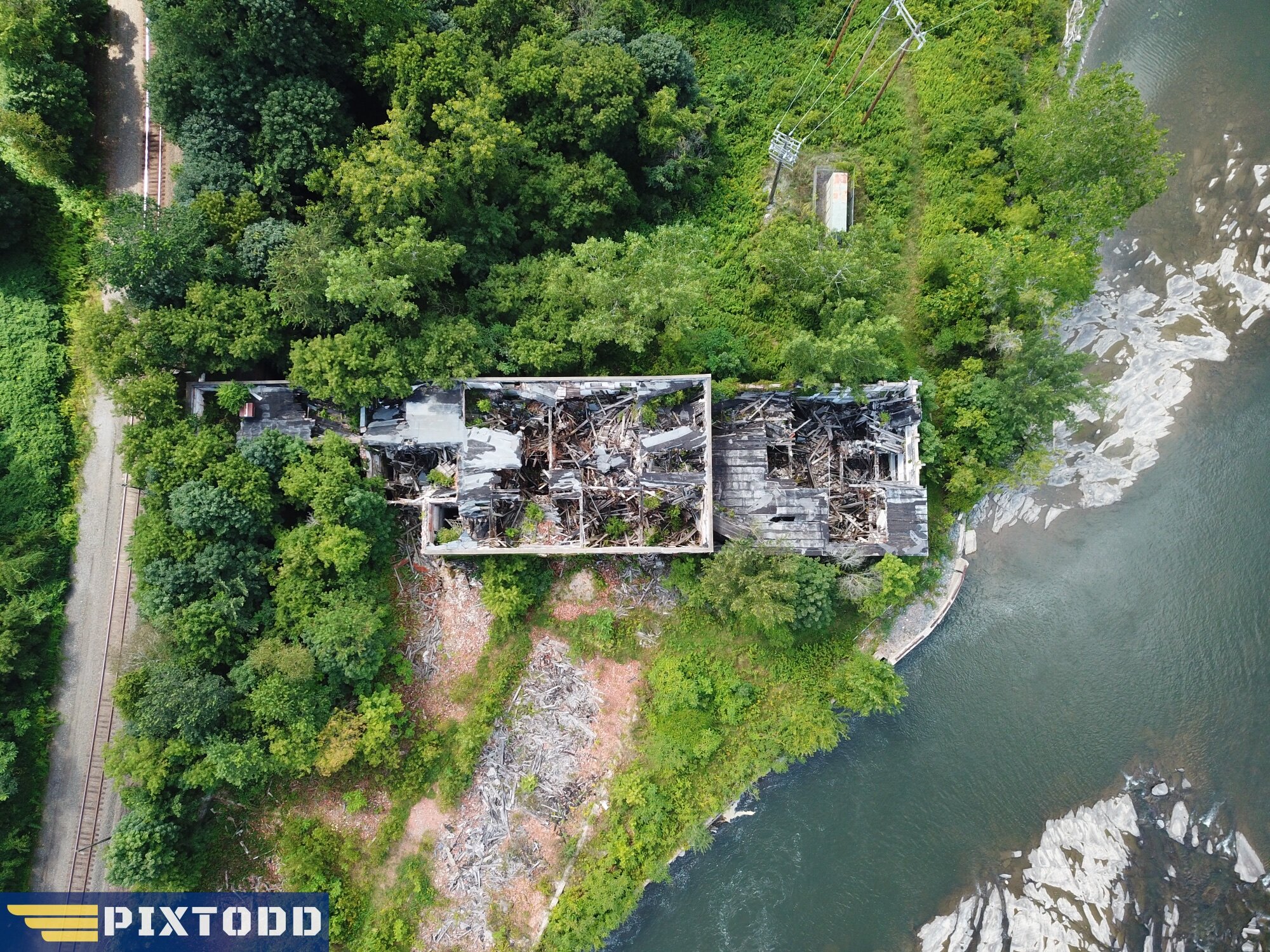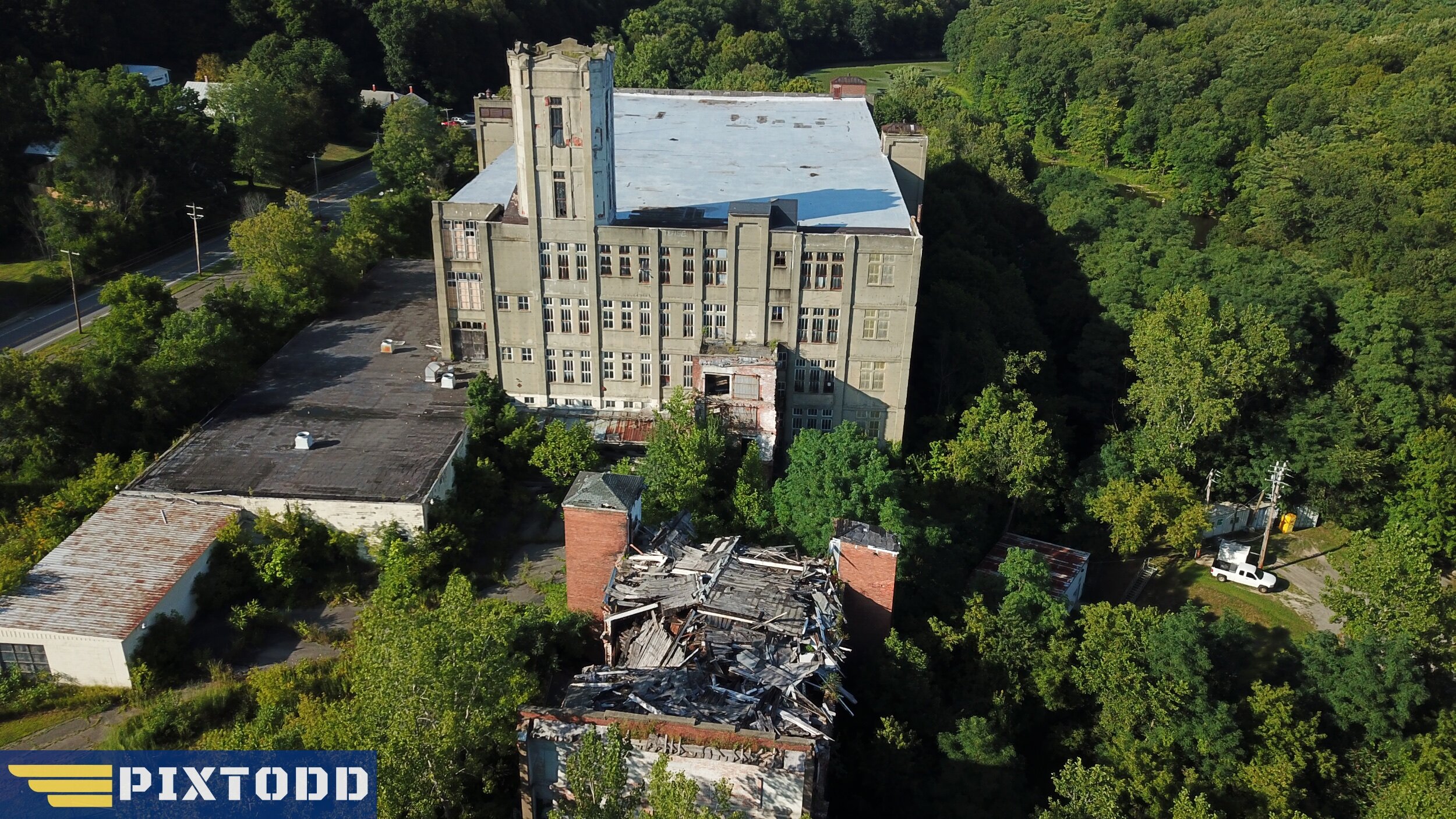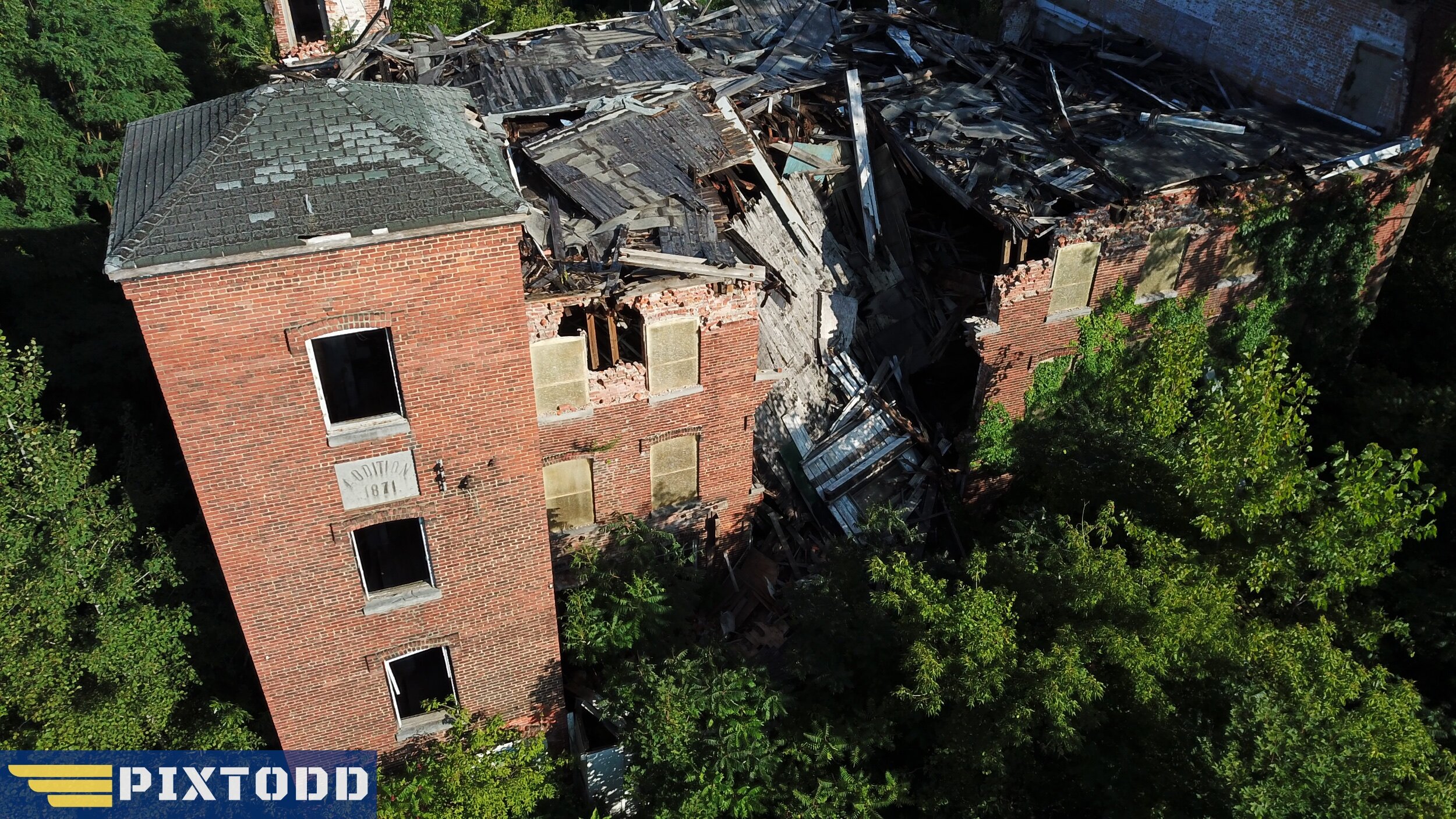Twin Bridges
The Thaddeus Kosciusko Bridge, commonly referred to as the Twin Bridges is a pair of identical through arch bridges, made of steel, which span the Mohawk River between the towns of Colonie and Halfmoon .
The Thaddeus Kosciusko Bridge, commonly referred to as the Twin Bridges is a pair of identical through arch bridges, made of steel, which span the Mohawk River between the towns of Colonie and Halfmoon . Each span carries three northbound and southbound lanes of Interstate 87 between exits 7 and 8. The toll-free bridge opened in 1959 as part of the Adirondack Northway.
Whiteface Mountain
We took the Whiteface Veterans' Memorial Highway to the parking area at the top of Whiteface Mountain. From there it was a steep hike to the top which is listed as New York's fifth highest peak at 4,867 feet.
We took the Whiteface Veterans' Memorial Highway to the top of Whiteface Mountain which is listed as New York's fifth highest peak at 4,867 feet. The road takes you to the summit of the mountain which on a good weather day has amazing views.
The paved road rises over 2,300 feet in five miles from the Toll House. At the summit, there is a castle said to be built from native stone, a restaurant and gift shop, an elevator carved deep inside the mountain top itself, and a 360-degree, panoramic view.
Wilson Castle
Wilson Castle is a nineteenth-century estate located in Proctor, Vermont.
Wilson Castle is a nineteenth-century estate located in Proctor, Vermont. Set on 115 acres of grounds, the house contains 32 rooms on 3 stories. Its facade is built of English brick and French marble in a fanciful architecture with 19 proscenium arches, 84 stained glass windows, 2 turrets, parapet, and balcony.
Its interior includes 13 fireplaces finished with imported tiles and bronze. Furnishings include Asian and European antiques, statuary, Chinese scrolls, and oriental rugs. The property also has a large orangery (greenhouse or conservatory) and an aviary.
Empire Mill
In 1862, Paper Bag King George West established his Empire Mill in Rock City Falls...
In 1862, Paper Bag King George West established his Empire Mill in Rock City Falls, a hamlet in the town of Milton, Saratoga County, New York. Across the street from the mill is The Mansion Inn of Saratoga. It was originally built as a 23-room Venetian, villa-style estate in 1866 and is recognized by The National Register of Historic Places.



There were saw and grist-mills in the upper part of Rock City before 1800, usually known then as the Hatch mills, though owned by Swan. This was the first use of the splendid water-power at that point. Not much later than that, however, another one was erected by Rathbone, the first settler at the hamlet of Rock City. There were two brothers Rathbone, one the pioneer merchant and landlord, the other the mill-owner. One of them afterwards removed to Greenfield.
Thompson Textile Mill
In 1871, Industrialist James Thompson built a textile mill in the village. Nearly all village residents worked in the mill and school kids ran home when the mill's lunch whistle sounded. (From wikipedia.org)
In the late 1800’s, Industrialist James Thompson built a textile mill along the Hoosic River in Valley Falls, New York. Nearly all village residents worked in the mill and school kids ran home when the mill's lunch whistle sounded. The mill provided fabrics to hat makers in the northeast. The company soon added finished products including twine and netting. In the 1950s, the mill catered to home sewing enthusiasts.
The Thompson firm opened a new mill in Delaware in the 1970s and another factory in Mexico in the 1990s. Cotton grown in the South was shipped to Mills here for processing into fabrics.
Valley Falls is a small town north of Albany and was considered the ideal location for Thompson to build his mill. The first mill was completely “vertical”, from spinning of yarns to weaving and finishing. Thompson concentrated on 3 main products: Buckram, Netting and Twine. The #1 fabric at the time was Buckram, as the fashion and social mores of that era dictated that everyone, men and women, wore a hat.
After its height of operation in the 1970s it entered a decade of decline. The mill had been vacant for at least 10 years when it went up in flames in the early morning hours on April 22, 2009.



Victory Mills Textile Building
Victory Mills is a historic textile mill building located at Victory in Saratoga County, New York.
The historic textile mill building located in Victory Mills (Saratoga County, New York) It was built in 1918 by the American Manufacturing Company and is a rectangular, five story brick, reinforced concrete building measuring 282 feet by 157 feet.



It has about 220,000 square feet of space and featured six tower structures, five for stairs and one holding a water tower. It operated as a cotton mill until 1929, when operations moved to Guntersville, Alabama. In 1937, it was purchased by the United Board and Carton Corporation, later A.L. Garber / Wheelabrator-Frye, then Clevepak Corporation / Victory Specialty Packaging Company who manufactured folding cartons. (Source wikipedia.org)
Fort Crown Point
Fort Crown Point was a British fort built by the combined efforts of both British and provincial troops (from New York and the New England Colonies) in North America in 1759 at a narrows on Lake Champlain
Fort Crown Point was a British fort built by the combined efforts of both British and provincial troops (from New York and the New England Colonies) in North America in 1759 at a narrows on Lake Champlain on what later became the border between New York and Vermont. Erected to secure the region against the French, the fort is in upstate New York near the town of Crown Point and was the largest earthen fortress built in the United States. The fort's ruins, a National Historic Landmark, are now administered as part of Crown Point State Historic Site.




The French built a fortress at Crown Point in the 1730s with 12-foot thick limestone walls named Fort St. Frederic. British forces targeted it twice during the French and Indian War before the French destroyed it in the summer of 1759.
The Crown Point fort was constructed by the British army under the command of Sir Jeffery Amherst following the capture of Carillon, a French fort to the south (which he renamed Ticonderoga) and the destruction of Fort St. Frédéric. Amherst used the construction of the fort as a means of keeping his men working through the winter of 1759 after pushing the French into modern Canada. Israel Putnam, who would later become a major general in the American Revolution, supervised much of the construction. According to archaeologist David R. Starbuck, Crown Point was "the greatest British military installation ever raised in North America."
The fort was never directly assaulted. Mostly built after the threat of French invasion had ended, it was used largely for staging rather than as a position in its own right. On April 21, 1773, a chimney fire broke out in the soldier's barracks. It quickly spread, burning for days.In May 1774, British military engineer John Montresor described the fort (post fire) with the following words: "the conflagration of the late fort has rendered it an amazing useless mass of earth only".Montresor proposed expanding and improving one of the outworks rather than attempting to repair the main fort.
After the French and Indian War, the British left a skeletal force at the fort. They quickly yielded to Capt. Seth Warner and 100 Green Mountain Boys, a Patriot American militia, on May 12, 1775 in the battle of Crown Point at the start of the Revolutionary War. The Americans captured 111 cannons from the British at Crown Point, and transported 29 to Boston for the defense of Boston Harbor.
The fort was used as a staging ground by Benedict Arnold during the Revolution for his navy on Lake Champlain. After the destruction of that navy in 1776 during the Battle of Valcour Island, the fort was abandoned to the British in 1777 after the failure of the patriot Invasion of Canada. In 1780 the British abandoned the fort and, following their success in the Revolution, the United States had no need for it, so left it to deteriorate.
The large earthen walls of the Fort are still visible today in the 21st century. The fire of April 1773 had entirely destroyed the log and earth fortress. The stone ruins of two barracks buildings at the site are being preserved. (Source - Wikipedia )
Saratoga Homestead Asylum
The Saratoga County Homestead, or Homestead Sanitarium, was a large Tuberculosis Sanatorium located in Barkersville, in Saratoga County, New York.
The abandoned Saratoga County Homestead was a large Tuberculosis Sanatorium located in Barkersville, in Saratoga County, New York. It is also known as the Homestead Sanitarium.
The Homestead was opened in 1914 and treated patients for tuberculosis until 1960. The original building was wood, but was replaced by the brick building that stands today in 1932. The institution reopened in 1961 as The Saratoga County Infirmary. Luckily we got an official tour of the building while it was up for bid. Needless to say, it is in rough shape.










The Homestead was sold via tax auction in Sept 2019 to current owner, James Walk from Corinth TX. The Homestead is set to undergo renovations and James is working with a local contact to start scheduling photography tours and will eventually open access to most parts of the hospital. The caretakers house is scheduled as the first stage in the rehab for the entire property. Plans for the property include creating a retreat for veterans, adding some local business, creation of agricultural training course and outdoor gardens along with a living museum of the sites history as a TB Hospital. (Source - Wikipedia)



































